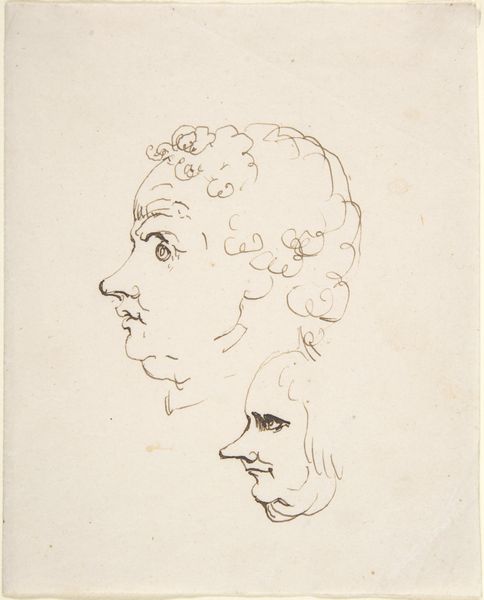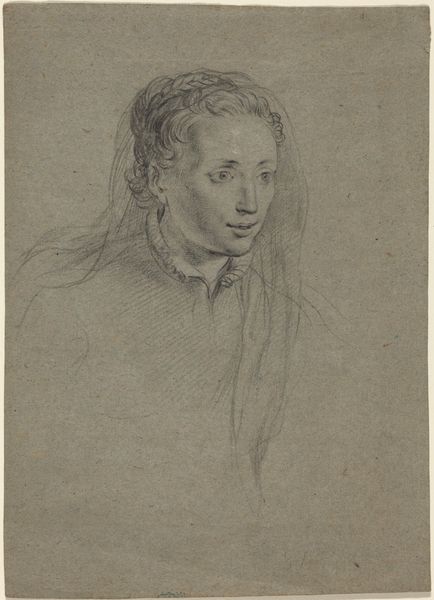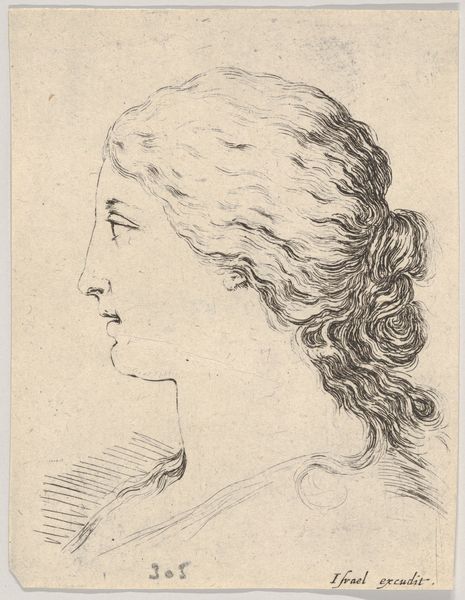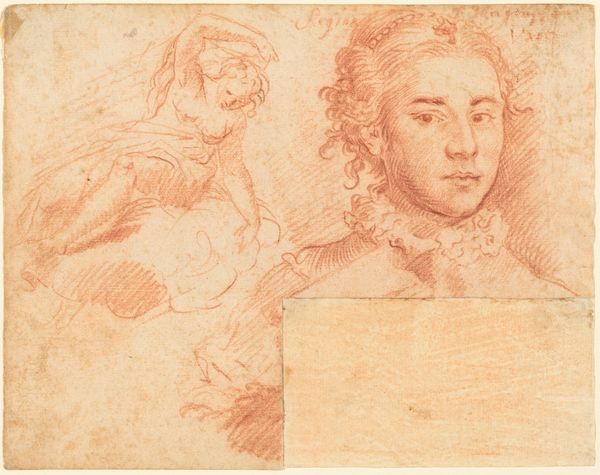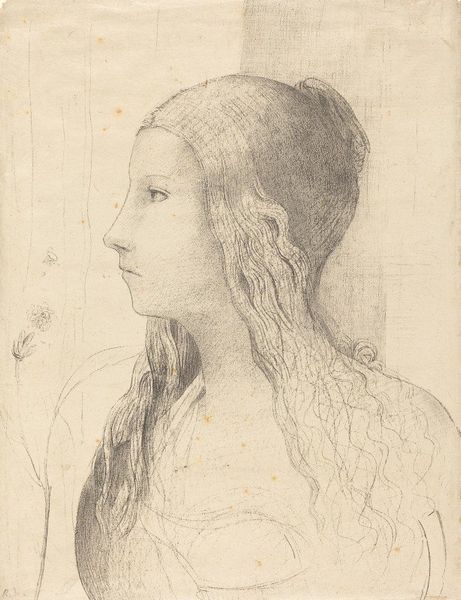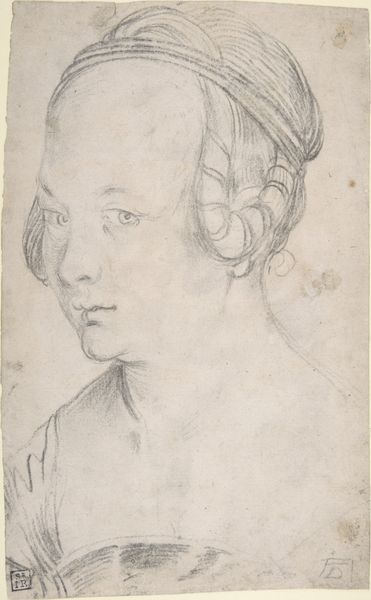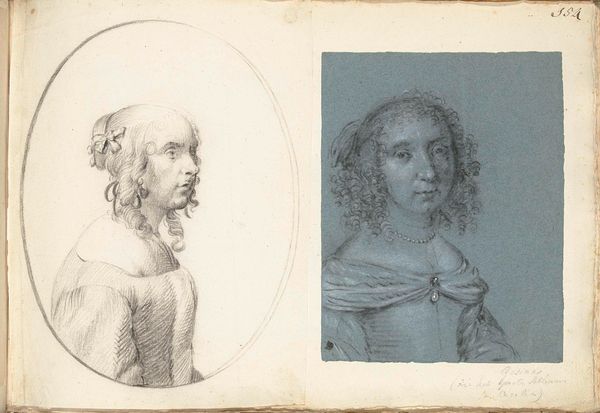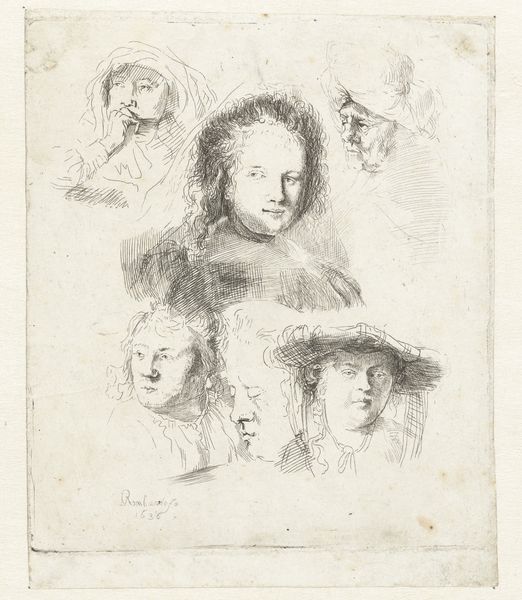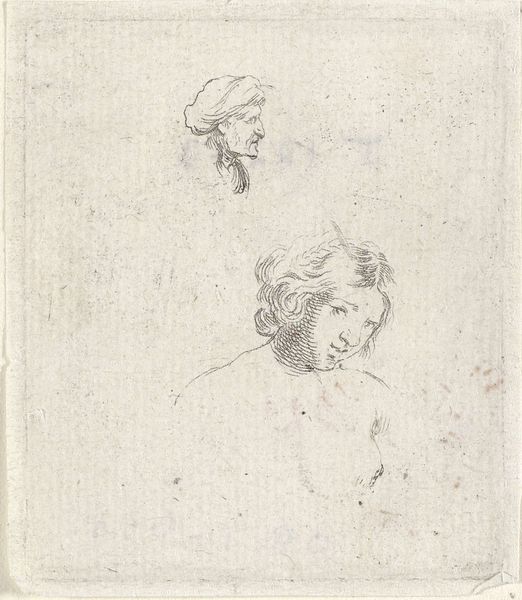
drawing, paper, pencil
#
portrait
#
drawing
#
imaginative character sketch
#
quirky sketch
#
dutch-golden-age
#
pencil sketch
#
figuration
#
paper
#
personal sketchbook
#
idea generation sketch
#
ink drawing experimentation
#
pen-ink sketch
#
pencil
#
sketchbook drawing
#
storyboard and sketchbook work
#
sketchbook art
Dimensions: height 198 mm, width 107 mm
Copyright: Rijks Museum: Open Domain
Curator: Here we have "Two Studies of Gesina," a drawing dating back to between 1645 and 1660, created by Gerard ter Borch the Younger. It's rendered in pencil on paper and is part of the Rijksmuseum collection. Editor: Well, immediately it feels like a backstage pass into the artist's mind, right? A quiet peek into someone’s sketchbook, some practice perhaps? They're almost hauntingly beautiful, in their simplicity. Curator: Absolutely. These aren't formal portraits; they seem to be preliminary studies, exploring the subject's features, maybe testing light and shadow techniques. You can almost feel the artist grappling with the materiality of pencil on paper to bring this likeness into existence. The accessibility of the material is vital to its character. Editor: It does feel like ter Borch is really playing with line and form here. There’s a fragility, particularly in the upper sketch – the line work seems hesitant but precise, while the lower image has greater depth and expression, but has that looseness. It's intimate. Curator: It tells us about ter Borch’s artistic process. Pencil drawings like these highlight how the artist engaged with both the immediate availability of the materials—paper and pencil were relatively accessible—and the slower process of refining his skills, his observational capacity, the mechanics of depicting likeness. Editor: You're right, it reveals a raw, unedited vision that is pretty great! In a way it invites you into that studio, the moment of creation, seeing how the artist struggles, but also triumphs, over his tools, his medium, and… dare I say it…his muse. It’s like we see these very raw ideas unfolding right on the page, which, honestly, for me is more compelling than any highly polished finished piece. Curator: I appreciate your take on that feeling of connection. Considering that art from this era often signified status through lavish displays of costly material, here ter Borch focuses our attention on the immediacy of the gesture and his subject as a type rather than any signifier of rank. Editor: Definitely food for thought, and for my own doodles. Thank you for the illumination! Curator: My pleasure, this piece reminds us that sometimes, the most revealing works are the ones never intended for the spotlight.
Comments
No comments
Be the first to comment and join the conversation on the ultimate creative platform.
